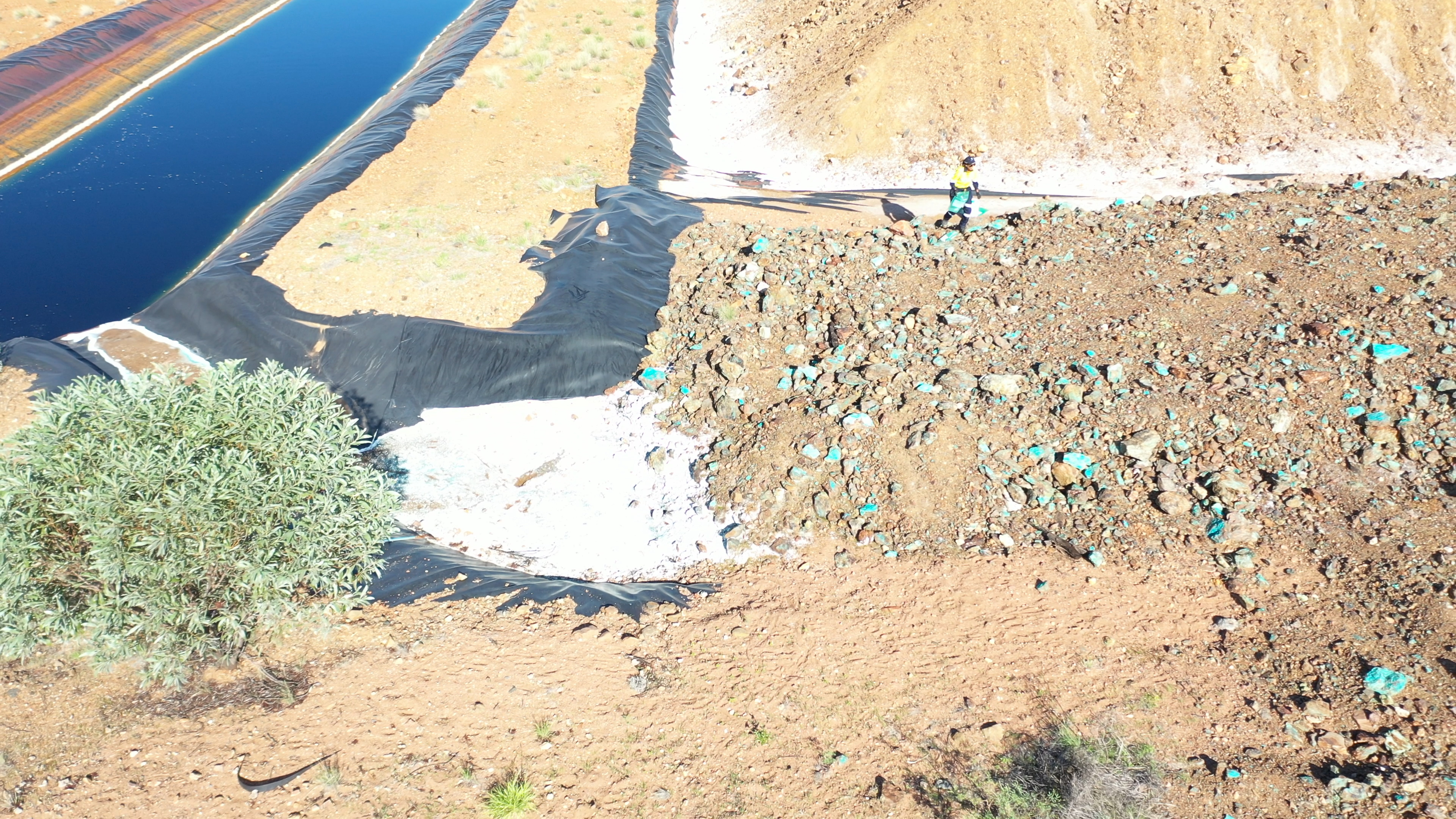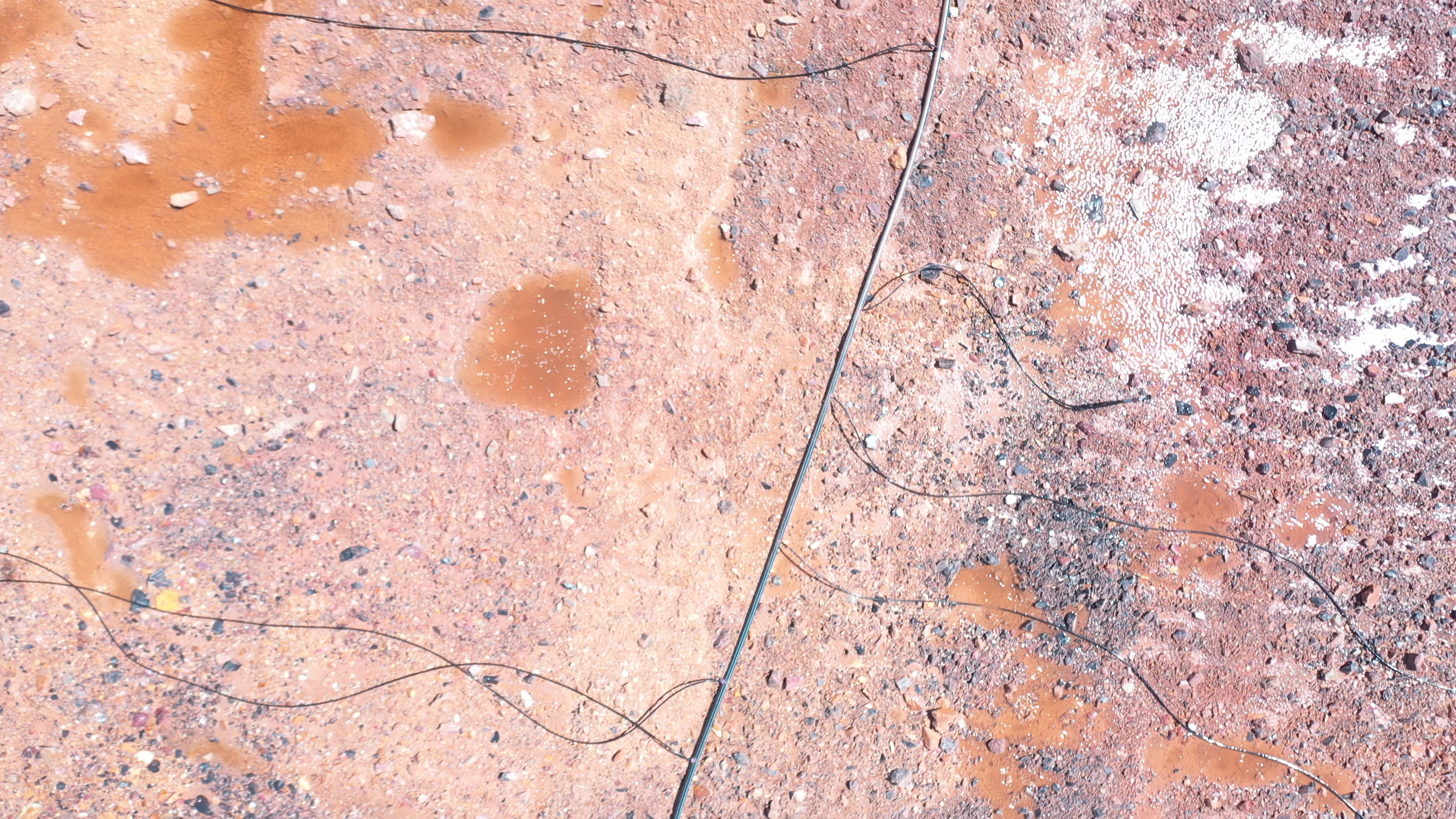
Moving and managing mine waste safely is an ongoing challenge for the mining industry but research underway at The University of Queensland’s Sustainable Minerals Institute suggests that re-mining the waste could offer an environmental and economic solution.
Dr Anita Parbhakar-Fox, a Senior Research Fellow at SMI’s W.H. Bryan Mining & Geology Research Centre, investigates ways to improve mine waste characterisation and identify remediation options for abandoned/ historical mine sites.
She believes many mine waste sites may contain concentrations of ‘new economy metals’ – a general term given to a group of metals and mineral elements essential to the development of emerging renewable, medical and consumer technologies.
“Traditionally rehabilitating mine sites is reliant on engineered solutions such as capping the waste using soils, or physically stabilising the mine waste with other materials,”
“But what is exciting now is people and businesses are viewing mine waste with a circular economy lens and the option of economic rehabilitation is now on the table."
- Dr Anita Parbhakar-Fox

“For example pyrite, a sulphide mineral commonly identified in mine waste and one of the main culprits for producing Acid Metalliferous Drainage, can contain significant concentrations of cobalt - a critical metal used in battery manufacturing for electric vehicles.
“It’s not just cobalt, other common sulphides such as sphalerite can contain indium used in touchscreen technologies, and molybdenite can contain rhenium used in high-strength alloys.
“With tech companies seeking alternative sources for these metals, the business case for reprocessing mine waste is starting to get global traction.”
Dr Parbhakar-Fox is leading a UQ team working on a 4-year, $1million project with the Queensland Government’s Department of Natural Resources, Mines and Energy (DNRME) examining new economy metal concentrations in Queensland’s mine wastes.
“If you think about the volumes of materials being mined, we aren’t mining ore mine, we are mining waste. For example, if the grade of a gold mine is 1 gram per tonne, then what happens to the other 999 kg of material?
“We drive past these waste rock dumps or tailings sites and we have no idea of the mineralogy– we don’t know the range of metals in the tailings.
“Companies are increasingly becoming interested in these potential resources and it’s maybe something valuable to have in their back pocket as operational mines approach closure and they think about reducing the long-term environmental footprint left at their site.
“In Australia it’s a sector that is growing and we actually have some really nice examples of mine sites that have adopted this type of thinking.
“The Century mine in Queensland originally mined base metals but when it ceased production in 2016 it was sold to New Century Resources, who, since 2018, have been reprocessing the tailings to pull out extra zinc.”
The economic incentive for re-processing mine waste is strong but so too is the environmental incentive.
In a country pockmarked with mine waste sites, reprocessing offers a chance to reduce the potential significant environmental consequences of poor waste management.
Even with the advances in mine waste management over the last few decades, Dr Parbhakar-Fox warns there are plenty of sobering examples of poor waste management around Australia.
“A common example of poor tailings disposal, perhaps even up until the mid-1990s, was depositing tailings and slag directly into rivers and allowing them to run through riverine environments.
“For example, in Queenstown, Tasmania, there are approximately 100 million tonnes of tailings moving through the Queen and King Rivers and, as a result, the ecology has been severely impacted.
“The tailings and slag have collected in a place called the King River Delta on Macquarie Harbour - if you sample the water there you will find very high concentrations of heavy metals, and they have worked their way through the food chain.
“Anecdotally, locals recommend to only eat fish from Macquarie Harbour once or twice a week."
“This is why in addition to our backend work around reprocessing and rehabilitation, SMI are also looking at mine planning.
“We are encouraging industry to understand at the beginning of the process how different minerals will react in the future when they are placed in dumps or storage facility environments.”
Dr Parbhakar- Fox has been working in this space for 15 years and says she has seen a shift in attitude towards mine waste.
“This field has become a lot more collaborative, the industry and METS companies are more supportive and industry is more receptive to research into their waste products as they recognise that economic rehabilitation underpinned by detailed characterisation offers a way to transform a potential liability into an asset.
“They fundamentally appreciate it is a mineralogical problem and know that research organisations like SMI, with expertise in mineralogy and mineral processing, can help them unlock that value.”
“This is why in addition to our backend work around reprocessing and rehabilitation, SMI are also looking at mine planning.
“We are encouraging industry to understand at the beginning of the process how different minerals will react in the future when they are placed in dumps or storage facility environments.”
Dr Parbhakar-Fox was attracted to work in this field after undertaking a BSc research project, at London’s Imperial College, focussed on geogenic arsenic pollution in Bangladesh’s shallow aquifers. Her PhD at the Centre for Ore Deposits and Earth Sciences (CODES) in Tasmania focussed on developing new acid and metalliferous drainage (AMD) characterisation approaches for the mining industry.
To date, she has worked on projects ranging from the application of new technologies for AMD prediction, evaluating mine waste practices, developing new tools for chemical data handling, and most recently establishing a geometallurgical approach for mine waste characterisation to identify opportunities for economic rehabilitation.
Contact details:
With thanks to the Geological Survey of Queensland for use of their videos.

